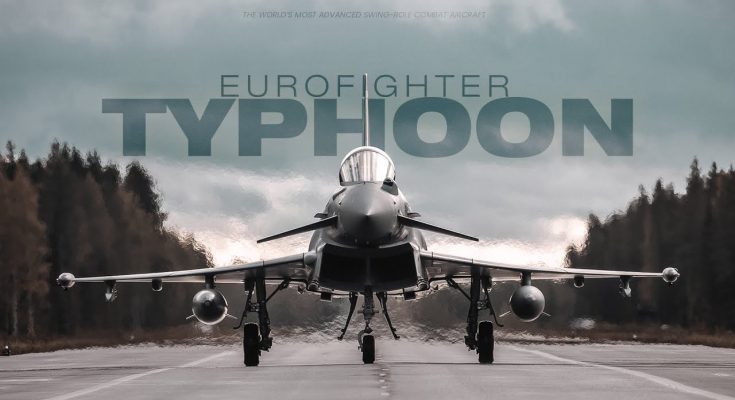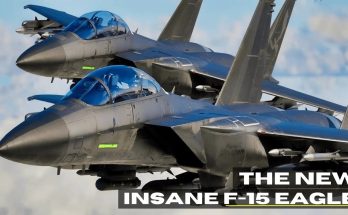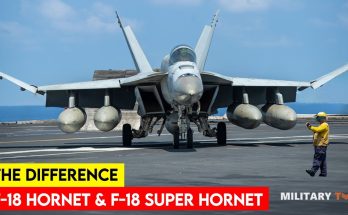The Eurofighter Typhoon is one of the most advanced and versatile fighter jets in the world, designed for air superiority and multirole operations. It has proven itself in various combat scenarios and has earned a solid reputation among the air forces of multiple countries. Here’s a look at the Eurofighter Typhoon in action, showcasing its capabilities, combat performance, and versatility:
1. Air Superiority and Combat Performance
-
The Eurofighter Typhoon was initially designed for air superiority, and it excels in dogfights and high-speed combat scenarios. Its canard-delta wing design gives it exceptional maneuverability, particularly in high-speed, close-quarters engagements. This makes the Typhoon an outstanding dogfighter, capable of outperforming other air superiority fighters in terms of agility.
-
In terms of combat performance, the Typhoon has been involved in several operations, where its ability to engage enemy aircraft and establish air dominance has been put to the test. It has been deployed in various regions, including the Middle East, Libya, and Afghanistan, to enforce no-fly zones, conduct air patrols, and provide combat air support.
2. Multirole Capability
-
While designed primarily for air-to-air combat, the Typhoon’s multirole capabilities are a key reason for its success in operations. The aircraft can perform air-to-ground strikes, close air support, and intelligence gathering missions, in addition to its primary role of maintaining air superiority.
-
Equipped with advanced sensors and targeting systems, the Typhoon can carry a wide range of precision-guided munitions, such as Brimstone missiles, Paveway bombs, and Storm Shadow cruise missiles, enabling it to strike targets with incredible accuracy and precision.
3. Real-World Combat Deployments
-
Operation Shader: The Royal Air Force’s (RAF) Typhoons were deployed in the Middle East as part of Operation Shader, which involved combating ISIS in Iraq and Syria. Typhoons provided critical airstrike capabilities and conducted precision strikes against terrorist targets while also providing air superiority in contested airspace.
-
Libya (2011): During the NATO-led intervention in Libya, Typhoons were used in Operation Unified Protector, enforcing the no-fly zone and carrying out precision bombing missions. The aircraft’s ability to operate in complex environments, with advanced radar and electronic warfare capabilities, made it a key asset in enforcing the mission objectives.
-
NATO Air Policing: The Eurofighter Typhoon also plays an integral role in NATO air policing missions, where it helps to maintain the integrity of allied airspace by intercepting unknown or potentially hostile aircraft. The Typhoon’s rapid response capability and interoperability with NATO systems make it indispensable in maintaining regional security.
4. Sensor and Weapon Systems
-
The Eurofighter Typhoon is equipped with some of the most advanced sensor systems in the world. Its CAPTOR radar (an active electronically scanned array radar) is one of the most powerful available for tracking and targeting both air and ground targets.
-
The aircraft’s electronic warfare systems, including DASS (Defensive Aids Sub-System), provide superior protection against enemy radar, infrared-guided missiles, and electronic attacks.
-
Typhoons can carry a variety of modern air-to-air and air-to-ground weapons, including AIM-120 AMRAAM and IRIS-T missiles, as well as laser-guided bombs and Brimstone missiles. This weapon diversity ensures that the Typhoon can adapt to different mission types, whether it’s engaging enemy aircraft or conducting strike missions on the ground.
5. Interceptor Role
-
The Typhoon is frequently tasked with interceptor missions, particularly in the role of quick reaction alert (QRA) to intercept and identify potential threats. Its ability to rapidly reach high altitudes, combined with its high-speed and high-maneuverability characteristics, make it an ideal choice for intercepting unknown or hostile aircraft.
-
The aircraft’s intercepting speed, aided by its powerful engines, allows it to quickly engage in any situation where it needs to defend airspace or neutralize potential threats.
6. Naval Operations and Carrier Compatibility
-
In recent developments, the Eurofighter Typhoon has also been tested for carrier operations, with the Italian Air Force deploying Typhoons on aircraft carriers. Though not primarily designed as a carrier-based fighter like the F/A-18 Hornet, the Eurofighter can be adapted for naval operations, demonstrating its versatility in different environments.
7. Global Partnerships and Export Success
-
The Eurofighter Typhoon is used by several countries around the world, including the United Kingdom, Germany, Italy, Spain, Saudi Arabia, and Qatar, with further export orders expected. The aircraft’s operational success and performance in NATO and other global air forces have solidified its place as one of the world’s leading fighters.
-
Global Deployment: Typhoons have been deployed to multiple regions for peacekeeping, combat missions, and training exercises. Its adaptability in various climates and environments—from European airspace to desert conditions—has further enhanced its demand on the international stage.
8. Future Enhancements
-
The Eurofighter is continuously being upgraded to meet future threats. Upcoming enhancements include new radar systems, advanced sensors, and integration of newer weapons and stealth technology improvements to keep the aircraft at the cutting edge of air combat.
-
The development of the Tempest fighter as part of the Future Combat Air System (FCAS) program in the UK and other partner nations is seen as the next step for Europe’s air combat capabilities. However, the Typhoon is expected to remain a central part of European air forces for many years due to its ongoing upgrades and operational success.
Conclusion: The Typhoon’s Enduring Legacy
The Eurofighter Typhoon has proven itself as a formidable and versatile aircraft in both air-to-air and air-to-ground combat scenarios. Its performance in real-world combat, ability to integrate with advanced weapon systems, and constant technological upgrades ensure that it will remain a key asset for many air forces worldwide for years to come. Whether in intercepting missions, enforcing no-fly zones, or conducting precision strikes, the Typhoon is a true testament to European air combat prowess.



